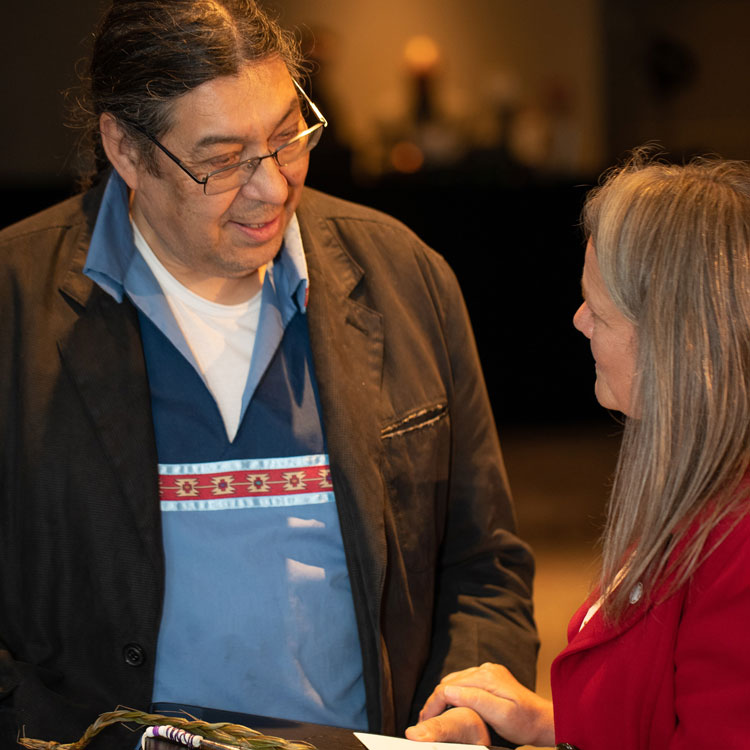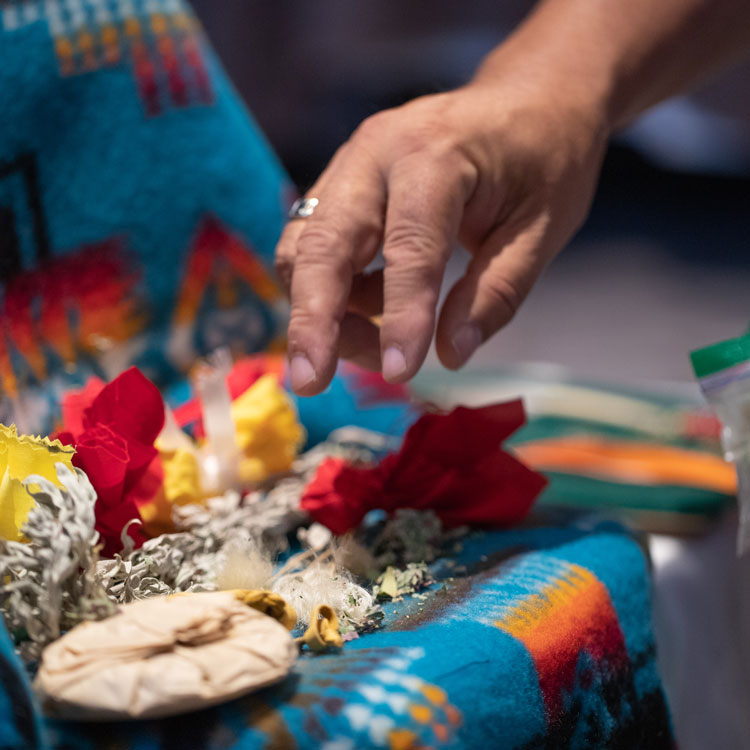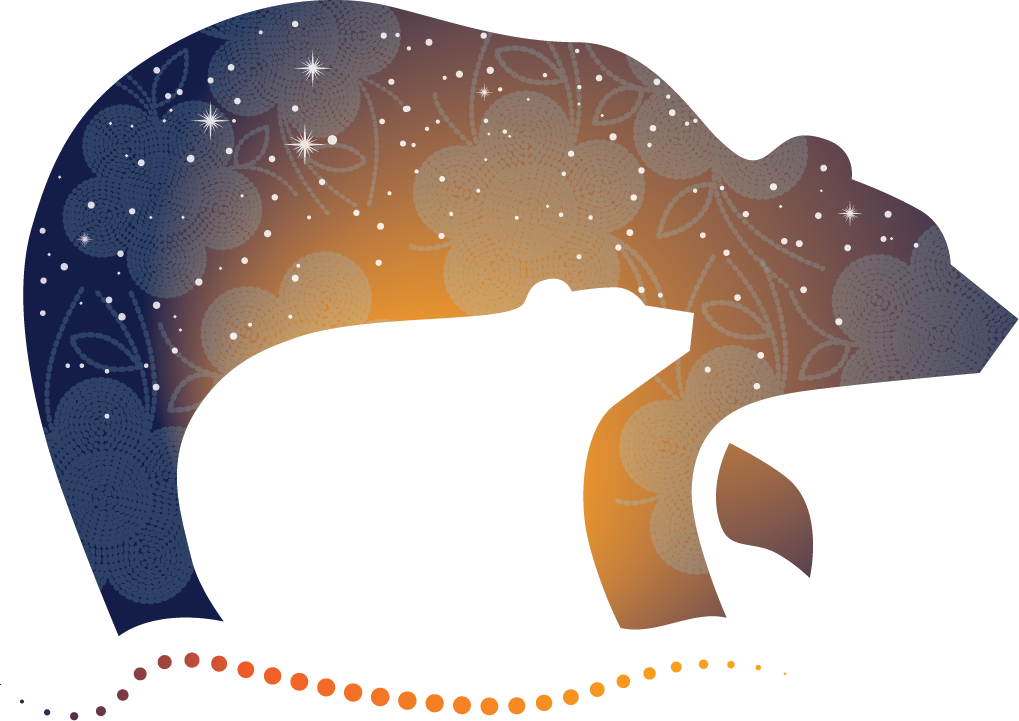About
In June 2022, Kimberly Murray was appointed as the Independent Special Interlocutor for a two-year term by the Minister of Justice and Attorney General of Canada. The Independent Special Interlocutor is to function independently and impartially, in a non-partisan and transparent manner, and to take part in conversations with Survivors, Indigenous families, and communities who are leading the Sacred work of recovering the missing children and unmarked burials. The Mandate involves speaking directly with those leading search and recovery work and with governments, churches and other individuals and organizations to help identify and remove existing barriers.
The Office of the Independent Special Interlocutor was established to support the work of the Special Interlocutor over her two-year Mandate. It assists Survivors and communities in various ways, including connecting them to funding programs, technical experts, and record holders.
Interlocutor
(in-ter-loc-u-tor)
Definition: one who takes part in dialogue or conversation
Etymology: The word interlocutor traces back to the Latin word Interloqui, meaning “to speak between”
— Merriam-Webster Dictionary
Mandate
The Special Interlocutor will identify needed measures and make recommendations for a new federal legal framework to ensure the respectful and culturally appropriate treatment of unmarked graves and burial sites of children at former Indian Residential Schools and associated institutions.
This will be done in close collaboration with First Nations, Inuit and Métis governments, representative organizations, communities, Survivors and families, the federal, provincial, and territorial governments and other relevant institutions such as church entities and record holders.
The Special Interlocutor will function independently and impartially, in a non-partisan and transparent manner to achieve the objectives of her mandate.
The work of the Special Interlocutor will be to:
- Engage with Survivors, First Nations, Inuit and Métis governments, Indigenous organizations, Indigenous communities, and families to gather information and input about barriers and concerns relating to the identification, protection and commemoration of unmarked graves and burial sites, including the exhumation and repatriation of remains, where desired.
- Provide information and liaise with relevant governments and organizations to assist Survivors, Indigenous families, and communities to address barriers and navigate federal, provincial, territorial and municipal systems to support their search and recovery of the missing children; and assist communities to obtain and preserve relevant information and records from Canada, the provinces and territories and any other institutions, such as church entities, universities and other record holders.
- Research promising practices, gaps, and barriers in the legal framework to identify recommendations to improve legal protections under Canadian law and create a new federal legal framework to protect unmarked burial sites and support the recovery of the missing children. The new legal framework will be governed by Indigenous laws, the United Nations Declaration on the Rights of Indigenous Peoples, the federal UN Declaration Act and informed by other relevant international legal instruments that may apply.
The Independent Special Interlocutor interprets the Mandate broadly. The term “missing children” includes any child who was never returned home from a government or church run institution. This includes Indian Residential Schools, Federal Hostels, recognized or not recognized under the Indian Residential School Settlement Agreement (IRSSA), and other associated institutions, such as hospitals (including psychiatric hospitals and sanatoria), Indian hospitals, reformatories, and industrial schools. The missing children also includes children who are buried in a registered cemetery, but their families were never notified of the location of their burials.
Guiding Principles
The work of the Independent Special Interlocutor is guided by the following principles:
- The bodies and Spirits of missing Indigenous children must be treated with honour, respect, and dignity.
- Survivors must be honoured and acknowledged for raising public awareness about the truths of unmarked burials of children who died at Indian Residential Schools.
- Indigenous families and communities have the right to know what happened to their children who died while in the care of the State and churches.
- Searches and investigations must follow the truth. This requires tracing the movement of each child, using records and Survivor testimonies, from when a child was first taken to an Indian Residential School through to any other institution or location to which they were sent.
- The search for unmarked burials and the recovery of missing Indigenous children must be governed by Indigenous laws, the United Nations Declaration on the Rights of Indigenous Peoples, and the United Nations Convention on the Rights of the Child.
Expected Outcomes
Over the two-year mandate, the Independent Special Interlocutor will produce three public reports:
- The Progress Update Report was released in November 2022.
- An Interim Report was released on June 16, 2023.
- A Final Report will be released by June 14, 2024.
Reports are informed by the shared knowledge and Indigenous-led practices discussed at the National Gatherings, and in meetings with Survivors and those leading search and recovery efforts across the country.
The final report will:
- Include needed measures and make recommendations relating to federal laws, regulations, policies, and practices surrounding unmarked graves and burial sites at former Indian Residential Schools, as well as other associated sites.
- Be based upon and include information shared through National Gatherings, meetings, submissions, community visits, and research carried out during the course of the Mandate.
Our Logo Story
Representing strength, family and healing, bears are the primary element in the Office of the Independent Special Interlocutor’s logo. The larger bear represents the parent, family and community, while the smaller bear symbolizes the children who were stolen and never returned.
The Northern Lights in the night sky are the Spirits of our ancestors dancing. The dancing guides the children to reunite with their ancestors.
The stars depict the connection between the children taken from their communities and the parents left behind, who would stare at the same stars longing to be reunited.
The flowers in the larger bear signify life and the resilience of Indigenous Peoples.
The changing colours in the dotted path illustrate the ongoing search for truth, justice and healing.
The three pairs of moccasins honour and acknowledge all First Nations, Inuit and Métis children.
At the first National Gathering on Unmarked Burials in Treaty 6 territory, Regional Chief Gerald Antoine observed that on the back of the larger bear, there is a clear outline of a child’s face looking up at the sky. Although this was not intentionally part of the design, it has shown us yet another way that the children’s spirits are speaking to us all.
— TRC Interim Report, 2012“For the child taken, for the parent left behind.”




